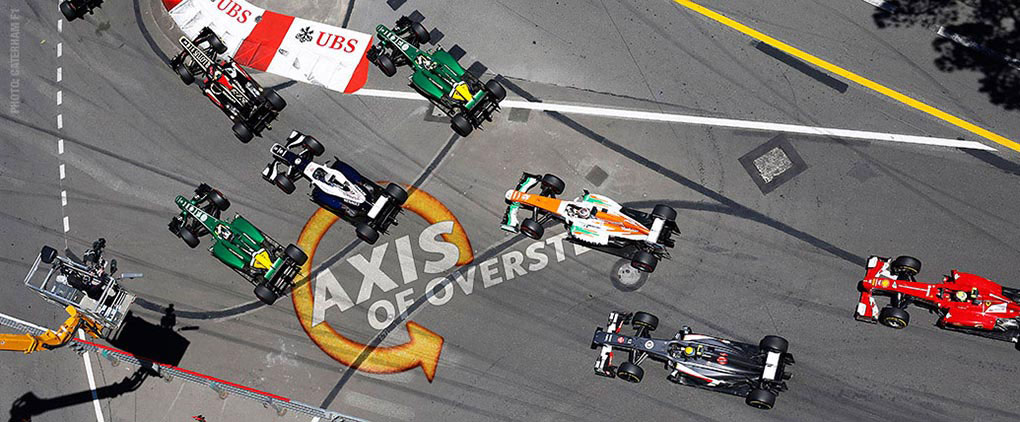If you are a regular reader you know enough not to get too excited about pre-season form so, rather than speculate on the future, it's fun to explore "conspiracy" theories while we wait for the season to begin in Australia.
F1 teams are in the middle of the second pre-season testing session in Barcelona and, despite the headlines, most experts agree Mercedes still holds the edge. Reliability and long runs may not make for fancy titles but that's what wins races.
That only fueled some corners of the F1 internet in formulating a "theory du jour" seeking to explain this overwhelming superiority and it makes for an entertaining read. Frst brought up by F1AnalisiTecnica.com and later picked up by Autosprint, it contains just enough, as Steven Colbert would say, "truthiness" to make it tantalizing.
Let me try to lay out this latest theory of where those extra 50 to 70 Mercedes hp might come from.
 |
| AutoMotorSport Photo. |
Mercedes engines, while never officially tested of course, were thought to produce 50 to 70 more horsepower than their rivals in 2014. That means that using the same amount of fuel they were able to show an efficiency improvement of 7 to 8%. That extra efficiency allowed the Germans more flexibility in fuel and aero loads but has been difficult to explain how this might be attained through conventional means.
The problem.
One way to produce more power is to burn more gasoline but, as you know, there is a strict limit of 100kg of fuel and a maximum instantaneous fuel flow limit of 100kg/hr. You might have more "powerful" fuel but that too is strictly regulated.
The theory
To achieve a more efficient burn, Mercedes is injecting small quantities of hydrogen into the combustion chamber. Hydrogen injection is known to improve burn velocity and to allow an engine to run leaner and reduce emission to boot.
Scientific research on the benefits of hydrogen injection was started in the 1970s at the Jet Propulsion Laboratory and continues to this day,
Wow, win-win?
Not so fast, F1 technical regulations forbid injecting stuff other than fuel and air into the combustion chambers. Article 5.14.2 states:
"Other than engine sump breather gases, exhaust gas recirculation, and fuel for the normal purpose of combustion in the engine, the spraying of any substance into the engine intake air is forbidden"
Hang on, spot potential loopholes?
That's right, "Other then engine sump breather gasses" is one.
What is not as regulated and is a seldom discussed area of great development in F1 is lubricants. Companies like Petronas have invested huge sums in advanced research related to F1. The theory is that they have figured out how to produce lubricants that, via a process of catalytic reforming, produce hydrogen that is then injected with the fuel.
If not via the lubricants, the other possibility cited is that Mercedes is extracting hydrogen from gasoline. It's not sci-fi, in fact Mercedes holds a patent for a similar process which you can read here.
So, that's it then?
Ah, no. The theory is based on several very large assumptions which we discussed with an F1 engineer friend of ours.
The first is that all cars have a comparable aero efficiency. This is simply not the case,
there is no such thing as a method of comparing drag, Red Bulls are way more draggy than others for example so any calculations based on top speeds is potentially flawed.
Also there is the assumption that Mercedes is able to produce enough enough hydrogen to make a difference over a whole race and without a substantial weight penalty.
Occam's razor
The third assumption is that Ferrari and Renault did not simply blow their calculations in 2014, that they did not just underestimate the importance of certain parameters in the Power Unit equation. Ferrari certainly underestimated the role of the energy store when they sacrificed it in the name of reliability and an aero efficiency.
This would explain why Renault and Ferrari both pushed for more flexibility in engine innovation, they realized their basic premise was flawed.
The idea of hydrogen is intriguing, cool technology.
Is Mercedes using it in their F1 cars? Not likely.
But who knows, maybe Toto called this guy!




Maybe Mercedes finally perfected Smokey Yunick's hot vapor motor?
ReplyDeleteThere are "fun" issue here.
ReplyDeleteIf the science is correct (getting straight H2 out of oil via a catalytic process in a small engine), there will be loads of other gases created (but most burn as good/better than fuel but not as well as H2).
So if the rules say 100kilos of fuel, a wet finger in the breeze estimation is between 15 and 25 kilos of oil weight to have a good effect. You need 5%, plus other gases, plus losses.
The resulting gas must be admitted upstream of the compressor (FIA only allows 3.75 bar in the oil system) below the LEL...
Maybe teams let the oil rest overnight in the car, letting it stratify, and only "burn" the lighter elements by a clever/apparently innocent use of valves...
Personally, if I were to do this, I would rather create a O2 rich molecule than more fuel, but that's just silly me.
So if they managed to do this, the technique would be quite fascinating.
It's fun to speculate on this sort of thing. More fun than aero anyway
ReplyDelete